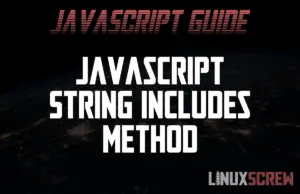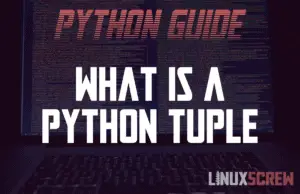Home » Programming
How to Get User Input in Python [With Examples]
This article covers getting user input on the command line using Python 2 or 3 and includes some useful examples. Get User Input in Python 3 Python 3 uses the input() function to collect user input: myText = input(“Enter some text:”) print(“You entered the text: ” + myText) Get User Input in Python 2 If you’re still using Python 2, you will use the raw_input() function instead: myText = raw_input(“Enter some text:”) print “You entered the text: “, myText # Python 2 uses different syntax to print output Typing Input … Read more

![How to Get User Input in Python [With Examples] 1 Get User Input in Python](https://cd.linuxscrew.com/wp-content/uploads/2021/02/Get-User-Input-in-Python-300x194.png)

![Creating Multiline Strings in JavaScript [With Examples] 3 Creating Multiline Strings in JavaScript](https://cd.linuxscrew.com/wp-content/uploads/2021/02/Creating-Multiline-Strings-in-JavaScript-300x194.png)
![Python Scatter Plots with Matplotlib [Tutorial] 4 Python Scatter Plots](https://cd.linuxscrew.com/wp-content/uploads/2021/02/Python-Scatter-Plots-300x194.png)
![PHP var_dump() Function [With Examples] 5 PHP var dump Function](https://cd.linuxscrew.com/wp-content/uploads/2021/02/PHP-var_dump-Function-300x194.png)
![PHP strtotime() Function - Converting Text to Timestamp [With Examples] 6 PHP strtotime](https://cd.linuxscrew.com/wp-content/uploads/2021/02/PHP-strtotime-300x194.png)
![Concatenating (Joining) Strings in JavaScript [3 Methods] 7 javascript string concatenation](https://cd.linuxscrew.com/wp-content/uploads/2021/02/javascript-string-concatenation-300x194.png)

![Python isinstance Function, With Example [Guide] 9 Python isinstance Function](https://cd.linuxscrew.com/wp-content/uploads/2021/02/Python-isinstance-Function-300x194.png)
